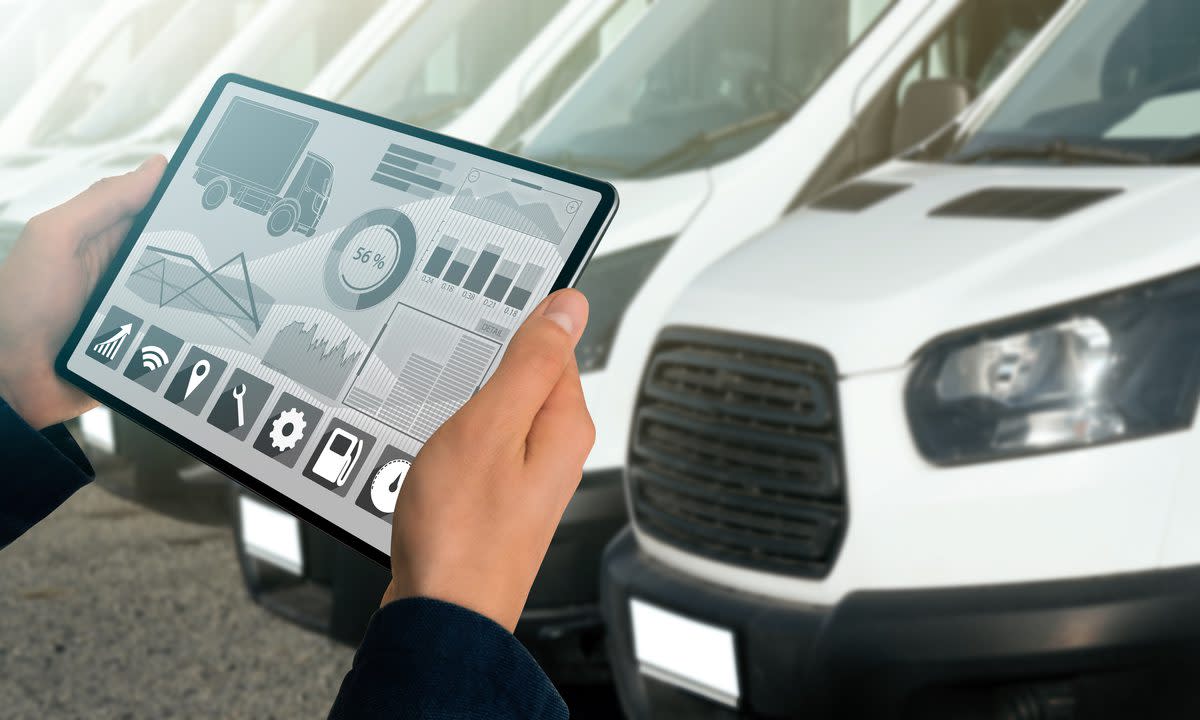That’s Not Just a Truck, it’s a ‘Rolling Data Center’

Fleet managers are taking the vast amount of data generated by today’s commercial trucks and using it to predict and prevent roadside breakdowns and other mechanical problems. They’re doing so with sophisticated systems that collect this information, analyze it and share it through a portal.
They have a lot of data at their disposal. Modern vehicles generate around 25 gigabytes (GB) of data per hour, according to Deutsche Telekom. The data comes from as many as 100 in-built sensors monitoring things like speed, engine temperature and braking processes. Those sensors produce 25 times more than the 1 GB of data per hour that Netflix says is used to watch a standard definition video.
Today’s commercial trucks also have sensors tracking vehicle uptime, monitoring driver trip performance data and logging fault codes, all with the goal of reducing fleets’ pain points, according to Zonar, a provider of smart fleet management solutions. The company recently shared this and other information about today’s technologically advanced commercial trucks.
“We’re pleased to share these findings in hope that our data can inform and enlighten drivers nationwide of the rolling data centers that are integral in transporting goods — and encourage every driver, professional or not, to appreciate the power of technology and innovation in making our road safer nationwide,” Fred Fakkema, vice president, safety and compliance at Zonar, said in a recent press release.
Increasing Vehicle Uptime
Among the technologies available for today’s fleets are remote diagnostics systems, predictive maintenance platforms, and electronic driver vehicle inspection reports (DVIRs) and compliance solutions.
Remote diagnostics systems use telematics to watch for fault codes from the vehicle and make it easier for fleet managers to understand the problems and prioritize repairs. Faults generated by the truck’s engine controller and other controllers can be sent to the manager via app, email or other services.
With this information, fleet management and vehicle tracking company Geotab notes, fleet managers can more accurately diagnose the issue, order parts and service, and increase vehicle uptime.
Online, predictive maintenance platforms are helping fleets monitor vehicle health by analyzing fault codes. These systems show all of a fleet’s vehicles on a single dashboard, identifies those that need attention and recommend action plans.
When fleet managers know what’s happening, they can schedule repairs and prevent roadside breakdowns. Paraphrasing Zonar, this allows them to not just fix it, but predict it.
Addressing Problems Before They Become Hazards
Electronic DVIRs enable drivers to complete and submit vehicle inspections via an in-vehicle tablet. In this way, they can do their pre-trip and post-trip inspections, and send a digital report to fleet managers. Systems also may enable notes and photo evidence. Federal law requires drivers to complete DVIRs before and after work each day.
Global telematics Software-as-a-Service provider Teletrac Navman notes that a paperless, streamlined process allows fleet managers to receive these reports in real time, address problems before they become safety or security hazards and create a closed-loop audit trail.
Also read: From Safety Monitoring to Driver Coaching, Fleet Telematics Offer ‘Eye-Opening’ Insights
Telematics also is used for other purposes, such as routing and monitoring drivers’ safety practices. PYMNTS has reported that a growing number of telematics-based systems enable fleet managers to see in real time how vehicles are being operated and then use data-based reporting to keep track of trends over time.
Beyond the obvious benefits of reducing the number of crashes and keeping vehicles properly maintained, fleets also are anxious to keep their trucks on the road to help meet today’s supply chain challenges. PYMNTS has reported that industries needing to deliver goods are running into challenges due to shortages of labor, commodities and transportation.

